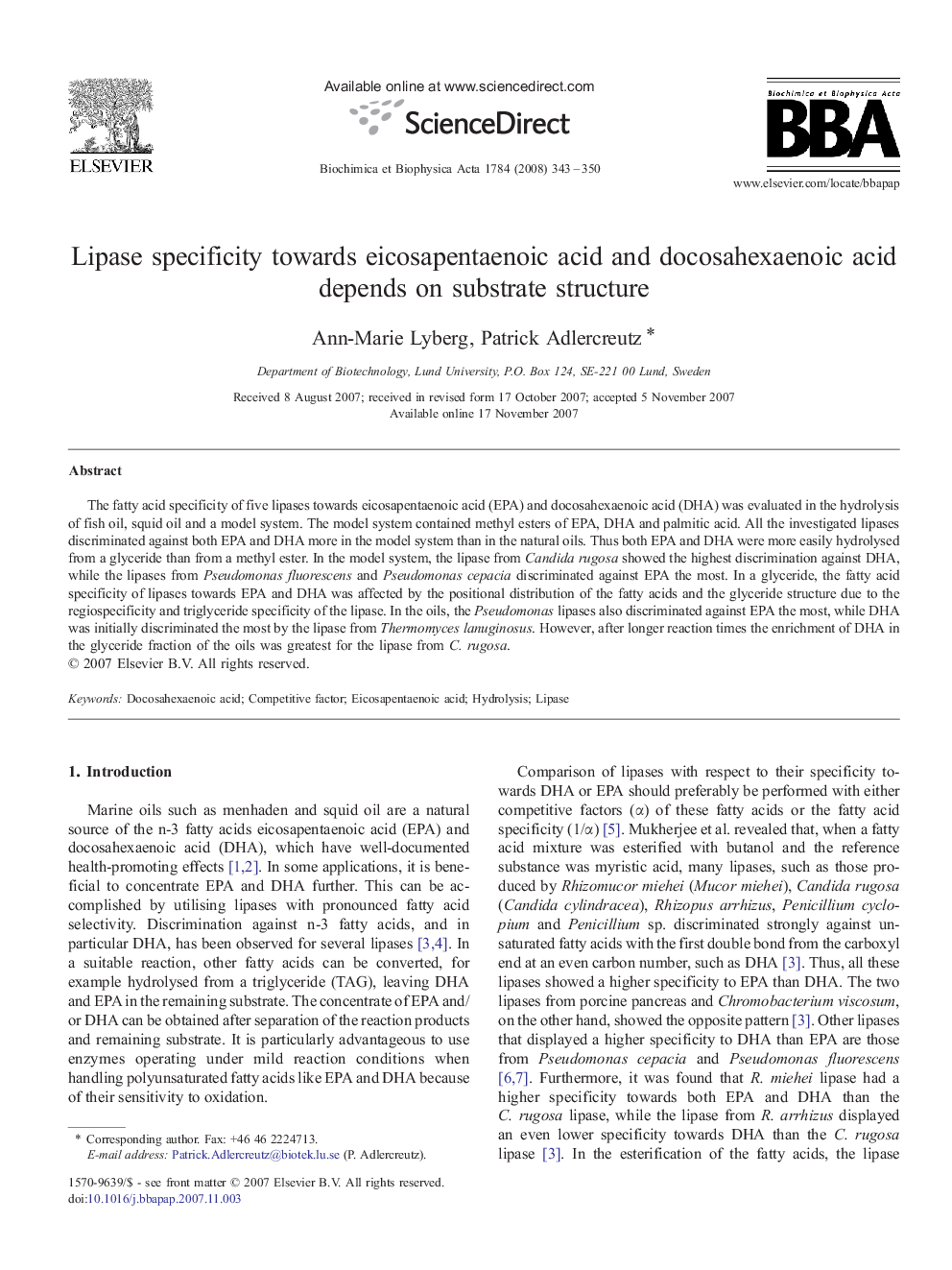| Article ID | Journal | Published Year | Pages | File Type |
|---|---|---|---|---|
| 1179186 | Biochimica et Biophysica Acta (BBA) - Proteins and Proteomics | 2008 | 8 Pages |
The fatty acid specificity of five lipases towards eicosapentaenoic acid (EPA) and docosahexaenoic acid (DHA) was evaluated in the hydrolysis of fish oil, squid oil and a model system. The model system contained methyl esters of EPA, DHA and palmitic acid. All the investigated lipases discriminated against both EPA and DHA more in the model system than in the natural oils. Thus both EPA and DHA were more easily hydrolysed from a glyceride than from a methyl ester. In the model system, the lipase from Candida rugosa showed the highest discrimination against DHA, while the lipases from Pseudomonas fluorescens and Pseudomonas cepacia discriminated against EPA the most. In a glyceride, the fatty acid specificity of lipases towards EPA and DHA was affected by the positional distribution of the fatty acids and the glyceride structure due to the regiospecificity and triglyceride specificity of the lipase. In the oils, the Pseudomonas lipases also discriminated against EPA the most, while DHA was initially discriminated the most by the lipase from Thermomyces lanuginosus. However, after longer reaction times the enrichment of DHA in the glyceride fraction of the oils was greatest for the lipase from C. rugosa.
